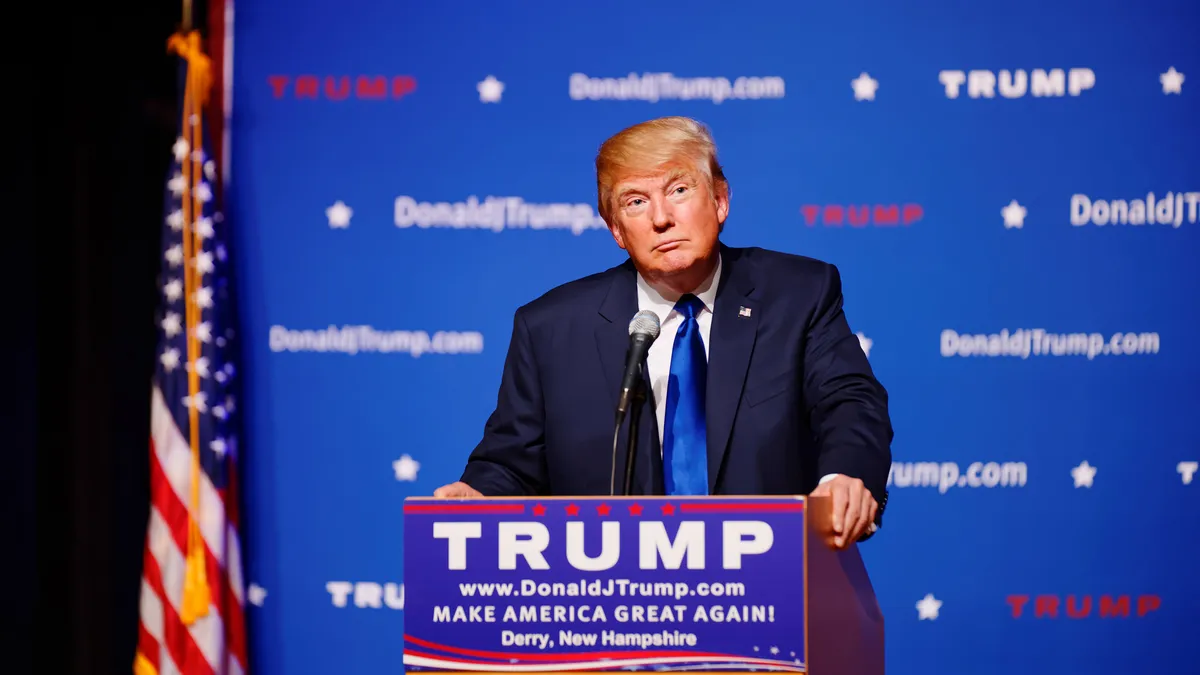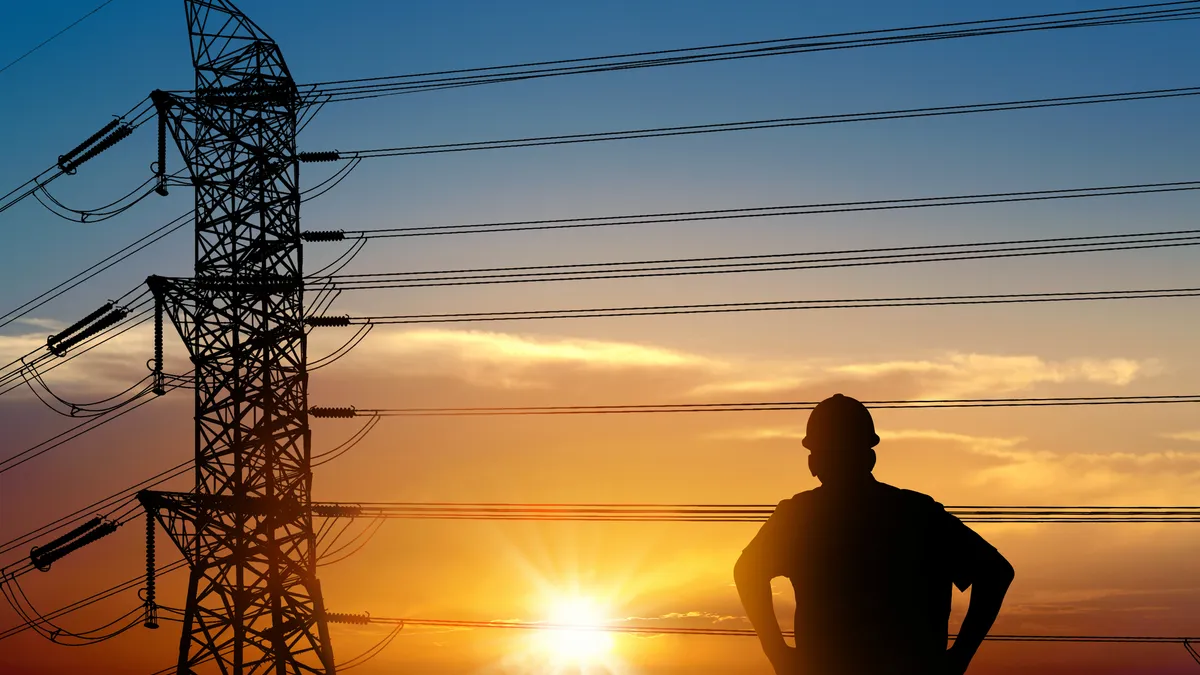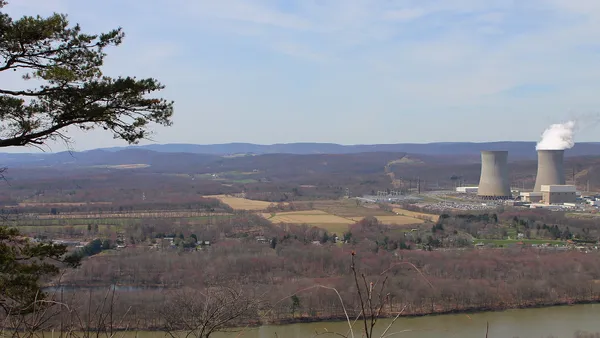There has been a lot of angst in the renewable power sector over what the Trump presidency will mean, but according to a Trump insider, renewable energy will not be in the new president’s sights when he takes office in January.
The day after the election, shares of solar power companies like SolarCity, SunPower and Vivint Solar cratered, as did wind turbine maker Vestas, while shares of coal company Peabody Energy jumped more than 50%. But those drastic movements may not prove to be an accurate reflection of the realities the energy sector will face under Trump’s presidency.
“Energy is not one of the top five agenda items” on Trump’s to-do list when he takes office in January, according to a major Trump financial contributor who said he is a member of the transition team and spoke on the condition of anonymity.
The top issues on that agenda are tax reform, immigration, reforming health care (Obamacare), infrastructure, and trade.
“Everything with renewables continues; the credits will remain in place,” he said.
During his bid for the White House, Trump criticized solar power programs such as the Department of Energy’s loan to Solyndra and his presidential transition website includes no details on wind and solar policy.
But despite the campaign rhetoric, the momentum of power sector deal flow, which has come largely from renewable energy deals, is likely to continue, say market participants.
There have been two main drivers of renewable energy deals, says Dan Reicher, executive director of the Streyer-Taylor Center for Energy Policy and Finance at Stanford Law School. On the federal side, there are tax credits and accelerated depreciation. At the state level there are renewable portfolio standards.
Even with Congress in Republican hands after the election, it is unlikely there would be a move to repeal the production tax credit (PTC) for wind power or the investment tax credit (ITC) for solar power, Reicher said.
There is also a limited incentive to repeal either the PTC or the ITC as both were renewed in December on a stepped down basis with definitive expiration dates. The PTC is expiring by 2020 and the ITC will drop to 10% in 2021.
So, in addition to the benefit remaining in place, the step-down schedule is likely to provide an incentive for developers of wind projects in particular to push to close financing on their projects sooner rather than later. At the beginning of 2017, for instance, the PTC drops to 80%.
The most likely scenario from a finance perspective will be “business as usual,” said a partner in a fossil fuel development company, who believes the Trump Administration will be “energy friendly” and could eliminate some regulations that could aid the development of gas-fired generation.
Under Trump’s presidency he sees fewer roadblocks for the continued development of hydraulic fracturing and for new pipelines to get the fracked gas to consumers, such as new gas-fired generators, which would be a positive for development. But in terms of financing, that is “based on economics and doesn’t have anything to do with what administration is in power,” the developer said.
Among the economic factors that the Trump Administration could influence, though, are the tax credits. Some commentators have pointed out that the Trump Administration would not even have to engage in the heavy legislative lift required repeal the tax credits, instead the administration could work through the Internal Revenue Service to revise some of the rules that govern the credits, such as the definition of construction start, which is one of the eligibility milestones.
That could be possible in some draconian scenario, said the Trump insider, but “it is not going to happen.” The PTC cuts across party lines with Republican states such as Iowa reaping benefits from wind power development.
Tax reform, in fact, could have the largest near-term effect on financing power projects, particularly legislation that would broaden the scope of entities that can participate in master limited partnerships (MLPs).
Before yieldcos – Wall Streetese for yield company – became popular in the sector, financiers were exploring MLPs as a way to bring down renewable finance costs by broadening the investor base for renewable investments. By law, MLPs are restricted to oil and gas assets.
But there already is legislation, the Master Limited Partnerships Act, backed by Lisa Murkowski (R-AK), chairman of the Senate Energy and Natural Resources Committee, that would extend the legislation to include renewable resources, as well as energy storage and carbon capture and storage technologies.
The Trump insider gives MLP reform an even chance of legislative success because it could be revenue negative. “There are only so many costs” that can be borne as part of a wider tax reform package, he said.
Part of that tax package could include doing away with the carried interest provisions that shield income from private equity and hedge funds.
Private equity is one of the largest sources of funding for power sector deals, so that particular Trump campaign promise could be seen as a negative for power sector deal flow, but in seen in the context of wider tax reforms that concern could evaporate if the top tax rate under Trump is 25%.
During his campaign Trump also promised bring back coal jobs. That could be a tougher task. Even the Trump insider admitted that the candidate might have “oversold what he can do” concerning coal jobs. The closure of coal-fired power plants and the decline in domestically consumed coal has more to do with low natural gas prices than it does with the Environmental Protection Agency, he said.
In fact, if Trump follows through with his pledge to spur $1 trillion in private sector infrastructure spending with $140 billion in tax credits that could further erode coal’s place in the nation’s generation mix by removing regulatory hurdles to the fracking of natural gas from tight shale formations. That, in turn, could lead to more pipeline infrastructure and more natural gas-fired power plants, especially if climate change regulations, such as the EPA’s Clean Power Plan, are challenged, which appears to be likely.
Trump’s emphasis on infrastructure, while most likely focused on public works such as roads and bridges, could also extend to transmission lines, especially in the western parts of the nation where many power lines are under more direct federal control.
Even if business as usual prevails for much of the power sector — there could even be an uptick in the financing pipeline or transmission deals — there could still be some pain. There will be “enormous casualties among climate change activities,” the Trump insider said. But, he added, “Trump doesn’t want to turn his back on climate change.”
Trump likes nuclear power, and he may push the zero emission attributes of nuclear plants, but, the insider said, there is little that can be done to reverse the economic challenges that nuclear power faces which, like coal-fired generation, are largely the result of low priced natural gas, which has driven down wholesale power prices.






















